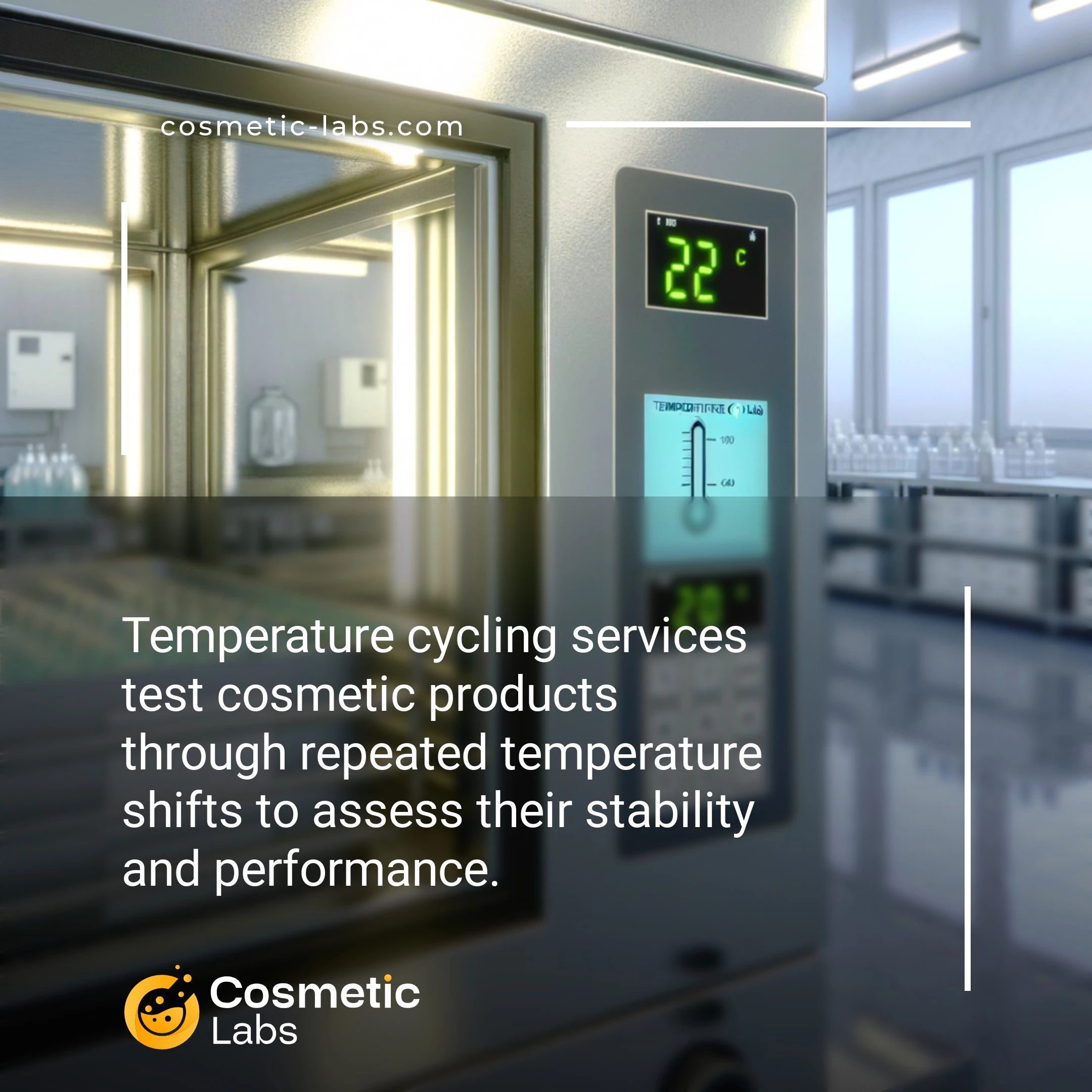Temperature Cycling Services for Reliable Cosmetic Product Testing

What is Temperature cycling?
Temperature cycling services test how your cosmetic products handle repeated shifts between hot and cold conditions—typically alternating between -10°C and 40°C over 24-hour periods. Labs use programmable chambers that mimic real-world storage and shipping scenarios, checking for separation, color changes, or texture breakdown after 3-5 cycles. This testing catches stability issues before products reach consumers, saving brands from costly recalls.
Why do you need this service?
Cosmetic labs use temperature cycling tests to predict how your lipstick formula performs after months in a hot car or cold warehouse. Labs expose products to alternating hot and cold conditions—typically between -10°C and 45°C—revealing texture changes, color shifts, or separation issues that save you from costly recalls before launch.
Who provides Temperature cycling services?
All cosmetic labs providing Temperature cycling services
There is no company providing these services at the moment.
Temperature Cycling Tests for Cosmetic Products
Temperature cycling tests expose your cosmetic products to repeated hot and cold conditions, mimicking real-world storage and transport scenarios. These tests help predict how your formulas will perform when shipped globally or stored in various climates.
What Temperature Cycling Reveals About Your Products
Labs run temperature cycling protocols that alternate between freezing and elevated temperatures over multiple cycles. Your products might experience -10°C to 45°C shifts within 24-hour periods.
These tests uncover:
- Emulsion separation in creams and lotions
- Color shifts in pigmented products
- Texture changes in gels and serums
- Package integrity issues with tubes and jars
Most labs complete standard cycling tests within 7-14 days, providing detailed reports on any physical or chemical changes observed.
Temperature Testing Standards and Applications
Professional labs follow ICH guidelines and industry-specific protocols when testing your products. Standard cycles include 3-5 temperature transitions daily for up to 30 days.
Common applications include:
- Pre-launch stability verification
- International shipping qualification
- Seasonal product development
- Packaging compatibility checks
Labs equipped with programmable chambers can customize cycling parameters based on your target markets. Products destined for tropical regions need different testing profiles than those shipping to temperate zones.
Practical Applications of Temperature Cycling Tests in Cosmetic Development
Temperature cycling tests reveal how your formulations perform under real-world storage and shipping conditions before they reach consumers.
Packaging Integrity Assessment
Labs use temperature cycling services to test how containers, pumps, and closures respond to extreme temperature shifts. Testing protocols alternate between -10°C and 45°C over 24-hour cycles to simulate warehouse storage and international shipping.
These tests identify seal failures, plastic deformation, and pump mechanism breakdowns that standard stability testing might miss. Results help you select packaging materials that protect your formulations through distribution challenges from factory to retail shelf.
| Temperature Range | Cycle Duration | Common Applications | Key Findings |
|---|---|---|---|
| -10°C to 25°C | 12 hours | Winter shipping simulation | Viscosity changes, separation |
| 4°C to 40°C | 24 hours | Retail storage conditions | Color shifts, texture changes |
| -20°C to 45°C | 48 hours | Extreme transport testing | Package seal integrity, leakage |
Formula Stability Verification
Temperature cycling exposes formula weaknesses that appear when products experience repeated heating and cooling. Labs monitor phase separation in emulsions, crystallization in serums, and consistency changes in creams through multiple temperature transitions.
Testing typically involves 10-30 cycles with measurements of pH, viscosity, and appearance after each cycle. This data predicts shelf life performance and helps formulators adjust stabilizer systems or modify oil-to-water ratios for better thermal resistance.